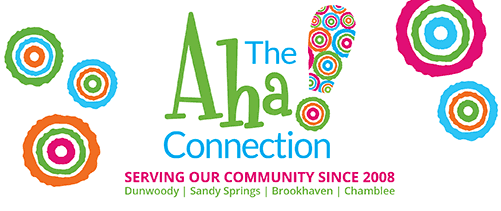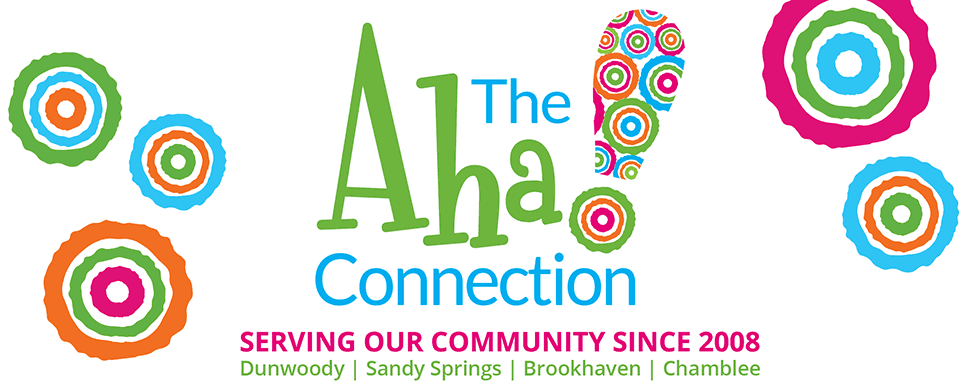by Jessica Fosse, MS, NCC, Atlanta Specialized Care for The Aha! Connection
When a child experiences anxiety, it can be distressing for both the child and their caregivers. The intense feelings of fear, worry, and unease can disrupt daily life and interfere with emotional well-being. In such moments, it’s essential to have reliable strategies that can quickly and effectively calm a child’s anxious mind. By helping children build a toolbox of coping skills, parents and caregivers can create a more manageable and peaceful experience for them. Here are three strategies that bring an anxious child relief:
Butterfly Hug
 The butterfly hug is a self-administered bilateral stimulation technique that helps alleviate anxiety and regulate emotions. This technique can be used as a preventive measure before a stressful situation or during an anxious moment for relief.
The butterfly hug is a self-administered bilateral stimulation technique that helps alleviate anxiety and regulate emotions. This technique can be used as a preventive measure before a stressful situation or during an anxious moment for relief.
To perform the butterfly hug, have your child cross their arms over their chest, placing each hand on the opposite upper arm (right hand on the left arm, left hand on the right arm). From there, your child should gently alternate tapping each arm in a rhythmic pattern. The rhythmic tapping stimulates both hemispheres of the brain, which supports emotional processing and regulation. Encourage your child to take slow, deep breaths and focus on the present moment as they continue the alternating taps.
There are several ways to make the butterfly hug more playful and enjoyable for your child. While explaining how to perform the butterfly hug, incorporate their imagination by having them pretend their arms are beautiful butterfly wings fluttering. Tapping to the beat of a preferred song or rhythm can also provide comfort. Visual aids or props can assist in engagement. For example, children can decorate or color a picture of a butterfly, and they can think about their decorated butterfly while performing the hug. By adding these playful elements, the butterfly hug becomes a fun and interactive experience, making it more likely that children will engage with the technique and use it as a tool to manage their anxiety and stress.
Dive Reflex
 Activating a child’s dive reflex is a highly effective strategy for managing severe anxiety. This reflex is activated when the face is exposed to cold water or compresses, setting off a series of natural physiological responses that conserve oxygen and protect vital organs. The dive reflex helps calm anxiety by slowing the heart rate, redirecting blood flow, engaging the parasympathetic nervous system, and lowering stress hormones.
Activating a child’s dive reflex is a highly effective strategy for managing severe anxiety. This reflex is activated when the face is exposed to cold water or compresses, setting off a series of natural physiological responses that conserve oxygen and protect vital organs. The dive reflex helps calm anxiety by slowing the heart rate, redirecting blood flow, engaging the parasympathetic nervous system, and lowering stress hormones.
The simplest way to trigger the dive reflex is to submerge the face in cold water for 15 to 30 seconds. With young children, full face immersion might not be feasible. As an alternative, splashing cold water onto the face or placing a cold pack over the child’s forehead, eyes, and nose can activate the dive reflex. The area between the eyes and nose, where the trigeminal nerve is located, is particularly sensitive and crucial for triggering this response. To help a child feel more comfortable, parents or caregivers can demonstrate face immersion and explain the science behind the dive reflex in a kid-friendly way.
Bubble Breathing
 Bubble breathing is a simple yet effective coping skill that helps children manage anxiety by focusing on their breath. Deep breathing activates the parasympathetic nervous system, which is responsible for relaxing the body during periods of stress. This technique is particularly engaging for children because it uses the fun and familiar activity of blowing bubbles, making it more relatable and easier to practice.
Bubble breathing is a simple yet effective coping skill that helps children manage anxiety by focusing on their breath. Deep breathing activates the parasympathetic nervous system, which is responsible for relaxing the body during periods of stress. This technique is particularly engaging for children because it uses the fun and familiar activity of blowing bubbles, making it more relatable and easier to practice.
To perform bubble breathing, have your child take slow, deep breaths in through their nose, then exhale gently through their mouth as if they are blowing a bubble. Encourage your child to imagine they are blowing into a bubble wand to promote controlled and slow breaths. The goal is to make their exhale as long and steady as possible without popping their imaginary bubble. For best results, have your child repeat the breathing exercise several times.
To enhance its effectiveness, incorporate bubble breathing into your child’s daily routine. Starting and ending the day with a few minutes of bubble breathing can be beneficial. Bubble breathing in the morning helps ground children and set positive intentions for the day, while practicing it at night helps them wind down before bed.
Incorporating these three strategies—whether it’s the dive reflex, bubble breathing, or the butterfly hug—can make a significant difference in helping a child navigate moments of anxiety. Each technique offers a simple yet powerful way to calm their mind and provides children with the tools they need to feel more in control of their emotions. By integrating these methods into your child’s routine, you’re not only helping them manage anxiety in the moment but also equipping them with lifelong coping skills.


Jessica Fosse holds a Master of Science in Clinical Rehabilitation Counseling from Mercer University. During her time at Mercer University, she specialized in evidence-based practices, disability advocacy, and mental health counseling. Jessica has experience treating individuals with anxiety, depression, trauma, OCD, ADHD, and autism spectrum disorder. Additionally, she is trained in case management and applied behavior analysis.
Jessica’s therapeutic approach is rooted in cognitive-behavioral techniques, mindfulness practices, and person-centered strategies. She works with children, teens, and adults to develop practical strategies for improving mental health, including managing anxiety, regulating emotions, improving executive function skills, overcoming life challenges, and enhancing social connections. She emphasizes the importance of fostering a safe environment where individuals can freely explore their thoughts, feelings, and behaviors without fear of judgment. She looks forward to supporting patients and making meaningful life changes.




